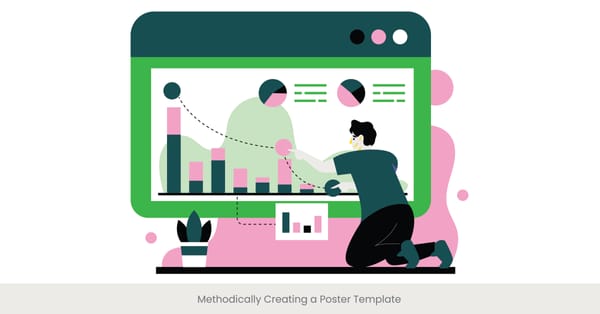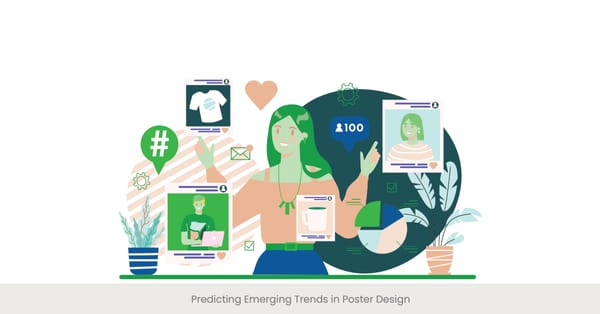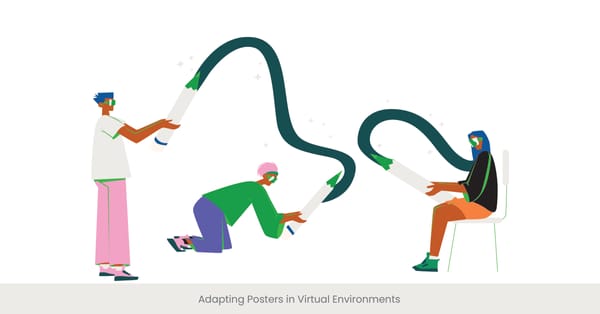
The History and Evolution of Poster Presentations
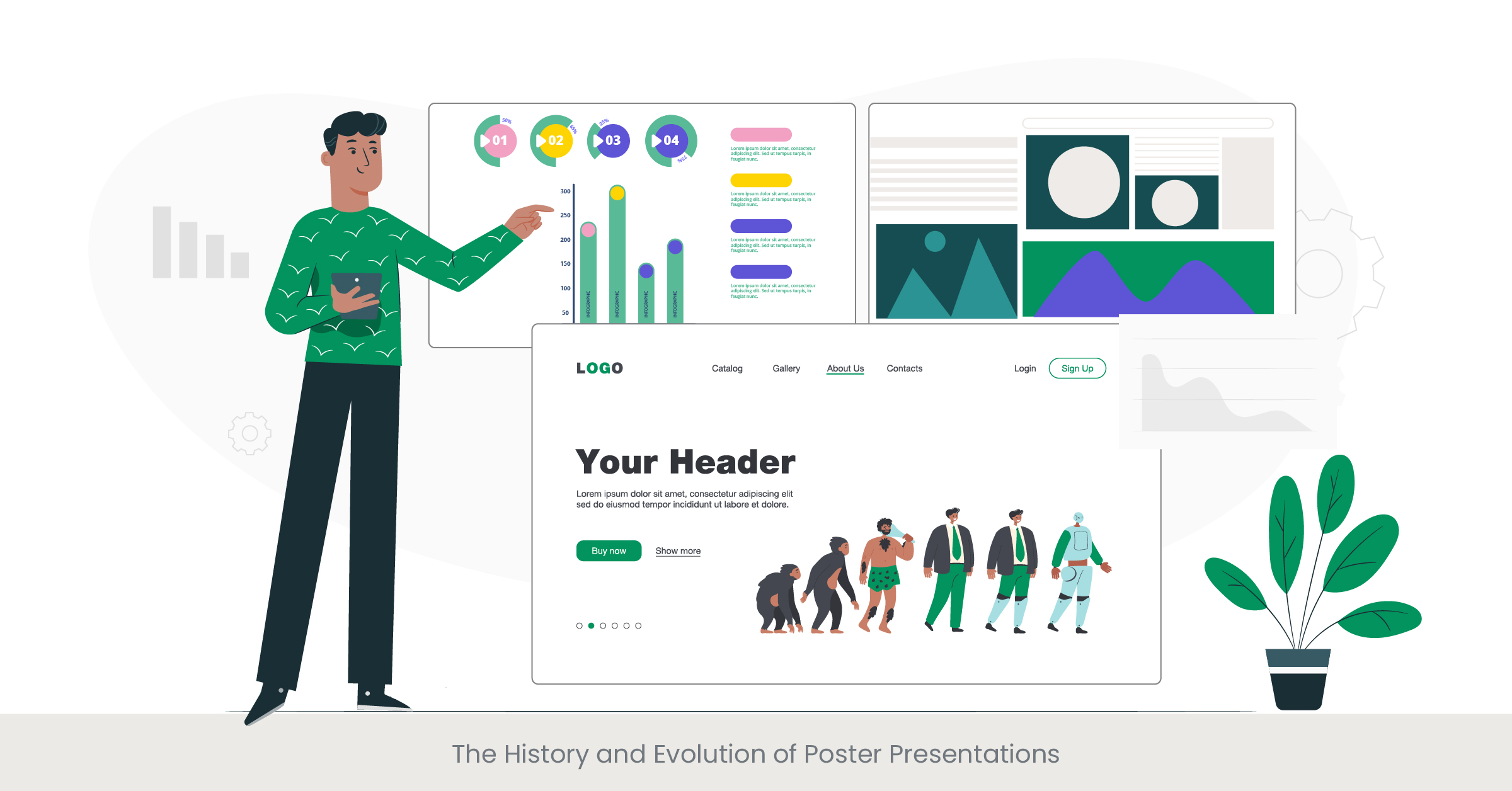
Introduction to Poster Presentations
In the ever-evolving world of presentations, Poster Presentation Services have become a go-to solution for professionals and researchers alike. Whether you're preparing for a conference, showcasing research, or promoting an event, having the right Professional Poster Design can make all the difference. This guide will help you understand the importance of custom designs and explore Poster Design Templates that suit a variety of needs.
Tracing the Origins
The history of poster presentations can be traced back to the 19th century, when the advent of mass printing technologies made it possible to produce posters in large quantities. Initially used for advertising and public announcements, the potential of posters to attract attention and convey messages quickly became apparent. The academic adoption of posters for presentations began in earnest in the mid-20th century, as conferences and symposiums sought more interactive and dynamic formats for sharing research findings. This period marked a significant shift from traditional oral presentations to a more inclusive and visually engaging method of scholarly communication.
Real-world Evolution and Impact
Throughout the decades, poster presentations have undergone significant transformations, influenced by advances in digital technology and changing academic landscapes. The introduction of digital design tools and software has expanded the possibilities for creativity and precision in poster design, allowing researchers to incorporate multimedia elements and interactive content. Moreover, the global push towards interdisciplinary collaboration and public engagement has elevated the role of poster presentations in facilitating conversations across diverse fields and audiences. Notable examples include the use of poster sessions at international conferences to foster global dialogue on pressing issues such as climate change, public health, and technological innovation.
Supporting Evidence
The significance and evolution of poster presentations are well-documented in academic literature and historical analyses. For instance, studies published in Educational Researcher highlight the increasing adoption of poster sessions in academic conferences as a means to enhance participant engagement and knowledge exchange. Similarly, a review in The Journal of Visual Communication in Medicine emphasizes the role of visual aesthetics and advertising in improving the effectiveness of scientific posters. These sources underscore the dual function of posters as both educational tools and objects of visual interest, validating their continued relevance in the academic, classroom, and professional discourse.
Benefits of Using Poster Presentation Services
Opting for Poster Presentation Services offers a host of advantages. From visually appealing layouts to easy readability, a professionally designed poster ensures your message is delivered effectively. Additionally, these services often provide Custom Research Posters that are tailored to your specific content, making them ideal for academic and corporate presentations.
Leveraging Poster Design Templates
If you're looking for a more budget-friendly option, Poster Design Templates can be a great alternative. Many Poster Presentation Services offer customizable templates that allow you to personalize key elements while maintaining a polished look. These templates come in various designs, making it easy to find one that aligns with your branding or research goals.
Choosing the right Poster Presentation Services or Professional Poster Design can have a significant impact on the success of your presentation. Whether you opt for fully customized Research Posters or utilize pre-made Poster Design Templates, investing in quality design ensures your message is communicated effectively and professionally.
Ready to Elevate Your Presentation?
Defining the Purpose of Poster Presentations
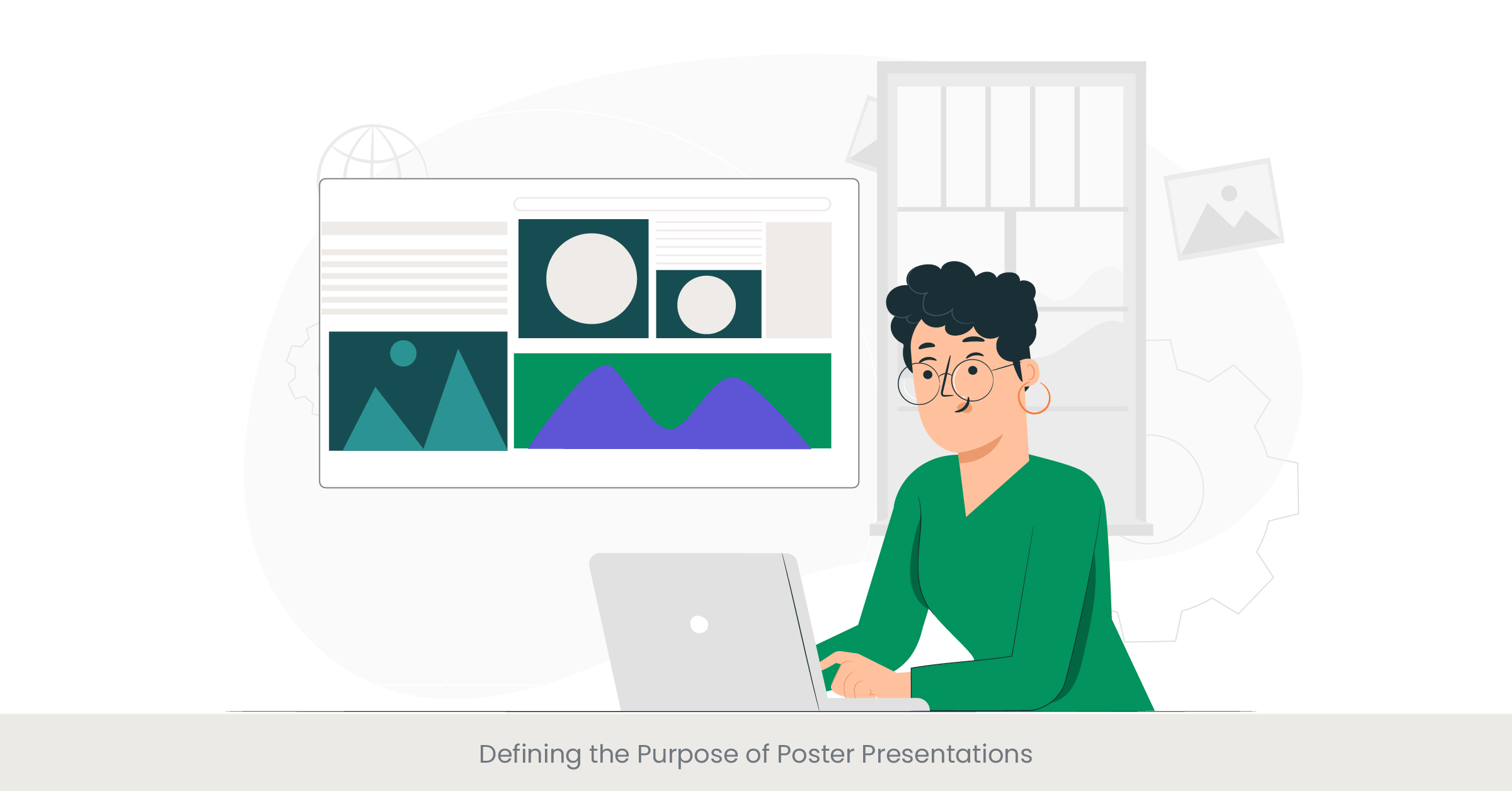
Exploring the Core Objectives
At its heart, the purpose of a poster presentation extends beyond merely displaying information on a large sheet. It is a strategic communication tool designed to capture the essence of research or a project in a manner that is both accessible and engaging to a diverse audience. Poster presentations serve a multifaceted role: they facilitate the concise summary of complex ideas, foster interactive dialogue between the presenter and the audience, and promote networking opportunities within the academic and professional communities. This unique format allows for the visual representation of data, theories, and conclusions, making abstract concepts more tangible and understandable.
A Professional Poster Design is not just about aesthetics; it’s about creating an engaging visual experience that communicates your key points. For those working in fields such as academia or science, custom-designed Research Posters play a pivotal role in simplifying complex information. Instead of settling for generic templates, investing in a Custom Research Poster ensures your work stands out.
Historical and Educational Context
When it comes to academic conferences or research presentations, Custom Research Posters are an absolute necessity. These posters are crafted to highlight essential data, using eye-catching visuals to engage the audience. Professional designers take into account various factors such as layout, color schemes, and fonts to create posters that are both informative and appealing.
The educational foundation of poster presentations is deeply rooted in the principles of active learning and visual literacy. By compelling presenters to distill their work into the most essential elements, poster presentations encourage clarity of thought and the ability to prioritize information effectively. Historically, this format has enabled a more democratized form of knowledge sharing, where students, researchers, and professionals, regardless of their stage in their career, can contribute their findings and insights to a wider discourse. The educational benefits of engaging with poster presentations are well-documented, highlighting improvements in critical thinking, design skills, and public speaking.
Real-world Applications and Benefits
In practice, poster presentations have proven invaluable across a multitude of disciplines—from science and engineering to humanities and arts. They offer a platform for early-career researchers to showcase their work, for interdisciplinary teams to present collaborative projects, and for seasoned academics to share their findings with peers and the public alike. Notable real-world applications include poster sessions at major international conferences, where cutting-edge research is introduced, sparking discussions that can lead to new collaborations, funding opportunities, and advancements in the field.
Academic and Professional Endorsements
The effectiveness and importance of poster presentations are reinforced by numerous studies and professional guidelines. For instance, The Chronicle of Higher Education emphasizes the role of poster presentations in enhancing scholarly communication and professional development. Additionally, guidelines published by leading academic institutions offer comprehensive advice on designing impactful posters, underscoring the importance of visual elements, concise content, and a clear message. These resources not only validate the significance of poster presentations within the academic community but also provide practical insights into maximizing their potential.
Different Formats and Styles of Poster Presentations

A Diverse Landscape of Presentation Formats
The realm of poster presentations is characterized by a rich diversity of formats and styles, each tailored to suit the specific needs of the subject matter and the audience. From traditional print posters to interactive digital displays, the evolution of technology and design principles has expanded the possibilities for presenting research and projects. This adaptability not only enhances the visual appeal of posters but also broadens their accessibility and potential for engagement. Understanding the variety of available formats is crucial for presenters aiming to convey their message effectively and captivate their audience.
Historical Evolution and Trends
Traditionally, university poster presentations were predominantly print-based, utilizing paper or fabric as the medium. These printed posters relied heavily on graphic design principles to organize text and images in a visually pleasing manner. However, the advent of digital technology has introduced new formats, such as electronic posters (e-posters) and interactive displays, which allow for dynamic content, including animations, video clips, and hyperlinks. This shift reflects broader trends in digital communication and multimedia, offering presenters innovative ways to illustrate their findings and engage with viewers.
Illustrating Through Examples
The impact of diverse formats and styles can be seen in various fields. For instance, in scientific conferences, e-posters have become increasingly popular, facilitating more in-depth discussions through embedded data visualizations and interactive elements. In the arts and humanities, posters often incorporate a blend of textual analysis and visual artistry, showcasing creative approaches to design and page layout. Examples of standout poster presentations can be found in academic journals and online platforms, where award-winning designs are shared as inspiration for future presenters.
Guidance from Experts
The choice of format and style should be guided by the content of the presentation and the context in which it will be displayed. Experts in visual communication and academic presentation, such as Edward Tufte and Nancy Duarte, offer valuable insights into effective design principles. Additionally, scholarly articles in journals like The Design Journal and websites dedicated to academic poster design provide practical advice, emphasizing the importance of clarity, coherence, and visual impact. These resources underscore the critical role of format and style in enhancing the effectiveness of poster presentations.
Essential Components of a Poster

Crafting a Compelling Visual Narrative
The effectiveness of a poster presentation hinges on its ability to communicate a complex narrative through a blend of visual and textual elements. Identifying and integrating the essential components of a poster are critical steps in crafting a presentation that not only captures attention but also conveys the intended message clearly and succinctly. These components typically include the title, abstract, introduction, methodology, results, conclusions, references, and acknowledgments. Each element plays a pivotal role in the poster's overall narrative, guiding the viewer through the research journey in a logical and engaging manner.
Building on a Solid Foundation
The foundation of a successful poster presentation lies in its structure and content organization. The title should be concise yet descriptive, offering a clear indication of the poster's focus. The abstract provides a brief overview of the study, inviting further exploration. Introduction sections set the stage, outlining the research question and its significance, while the methodology and results sections detail the research process and findings. Conclusions highlight the implications of the study, and the references and acknowledgments sections give credit to the sources and contributors. This structured approach ensures that viewers can easily navigate the poster and grasp the key takeaways.
Real-world Examples and Design Strategies
Examining real-world examples of effective poster presentations reveals common design strategies that enhance readability and viewer engagement. These strategies include the use of bullet points for concise information delivery, graphical abstracts to summarize findings visually, and the strategic placement of visuals to complement the text. For instance, a poster in the field of environmental science might use infographics to illustrate the impact of pollution on ecosystems, while a medical research poster might include charts and graphs to display clinical trial results.
Expert Insights and Resources
The importance of these essential components and design strategies is echoed in literature and resources aimed at guiding poster designers and creators. Edward Tufte's principles of information design emphasize the balance between visual and textual elements, advocating for clarity, precision, and efficiency. Similarly, resources like The Craft of Scientific Posters provide practical advice on selecting and organizing poster components to maximize impact. Peer-reviewed articles in academic journals also offer case studies and analyses of successful posters, serving as valuable references for those looking to create their own.
Explore Our Case Studies to See How We Deliver Results!
The Lifecycle of a Poster Presentation
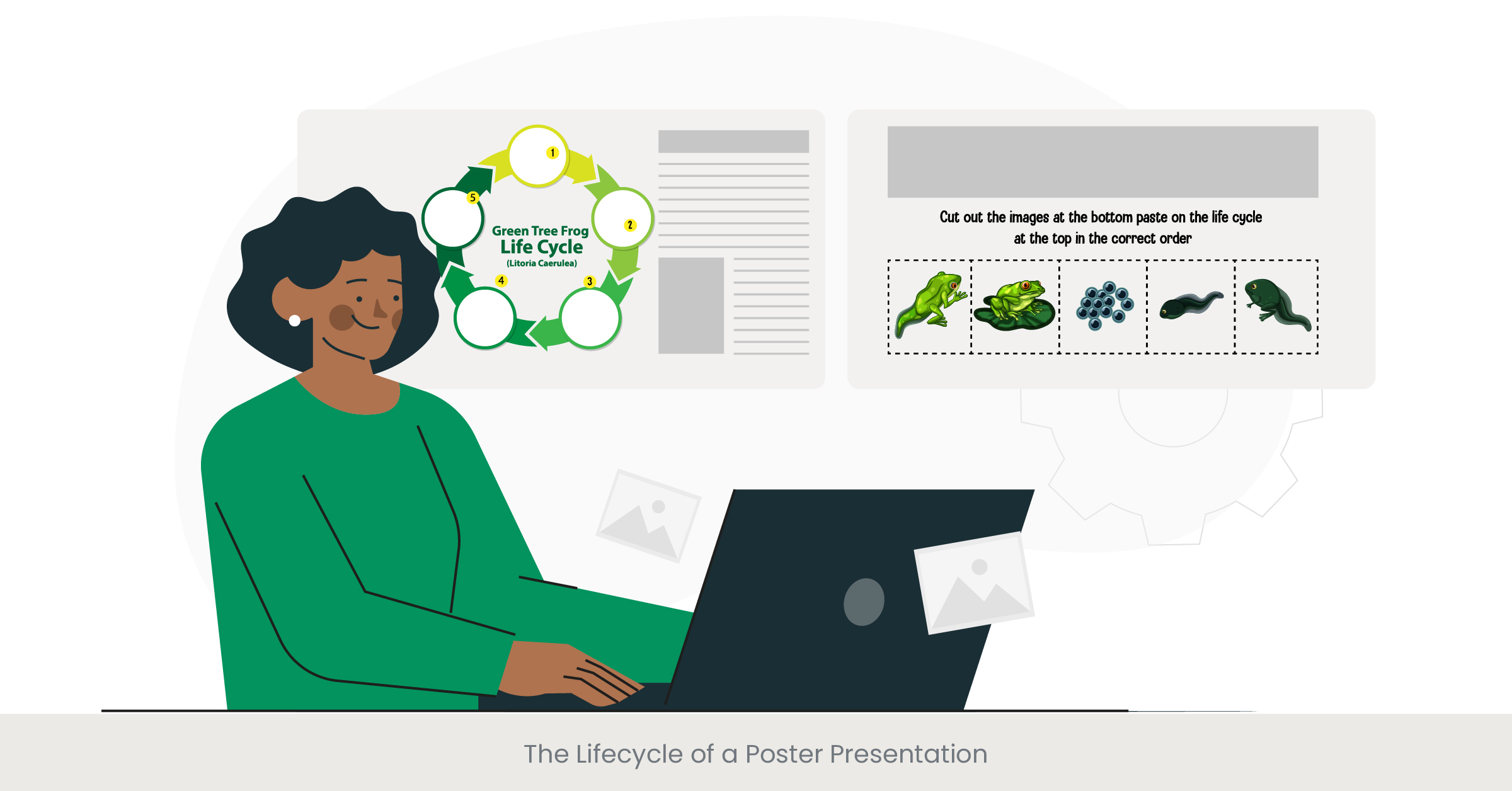
From Concept to Display: Navigating the Journey
The lifecycle of a poster presentation encompasses a series of stages, from the initial concept to the final display and beyond. This journey begins with the identification of a research question or project theme, followed by the meticulous planning and design of the poster. Key milestones include the development of the poster's layout, the selection of visual elements, and the refinement of textual content. The culmination of this process is the presentation itself, where the poster is displayed to an audience, serving as a visual anchor for discussion and engagement. Understanding each phase of this lifecycle is crucial for presenters aiming to maximize the impact of their work.
Foundational Steps and Planning
The early stages of a poster's lifecycle are marked by brainstorming sessions, where ideas are generated and objectives are set. This phase involves extensive research and gathering of information, laying the groundwork for the poster's content. Decisions regarding the poster's format, style, and essential components are made, informed by the presenter's goals and the expectations of the target audience. Effective planning at this stage ensures a coherent structure and a focused message, setting the stage for a successful presentation.
Design, Development, and Delivery
The design and development phase is where the poster takes shape. Presenters employ various software and tools to create visual representations of their data and ideas, paying close attention to layout, typography, and color schemes. This phase is iterative, often involving multiple revisions to fine-tune the poster's aesthetic and informational elements. Once the design is finalized, the poster is produced—either printed or prepared as a digital display—and readied for presentation. The delivery stage is a critical opportunity for presenters to engage with their audience, field questions, and gain feedback, adding a dynamic dimension to the poster's lifecycle.
Post-Presentation Impact and Archival
After the presentation, the poster's lifecycle continues through the dissemination of its content in digital repositories, academic websites, or social media platforms, reaching a wider audience and extending its life beyond the initial event. This phase may also involve reflecting on feedback, making adjustments, and repurposing the content for future presentations or publications. Proper archival and sharing practices ensure that the knowledge and insights conveyed through the poster remain accessible and continue to contribute to scholarly dialogue and public discourse.
Incorporating Expert Guidance and Best Practices
Throughout the lifecycle of a poster presentation, adherence to best practices and expert guidance is paramount. Resources such as The Effective Scientist's Guide to Poster Design and academic blogs on presentation skills offer a wealth of tips and strategies for each stage of the process. These resources stress the importance of clarity, engagement, and adaptability, advising presenters to anticipate audience questions and be prepared to discuss their work in-depth. By navigating the lifecycle with intention and expertise, presenters can significantly enhance the visibility and impact of their research.
Selecting the Right Software and Tools
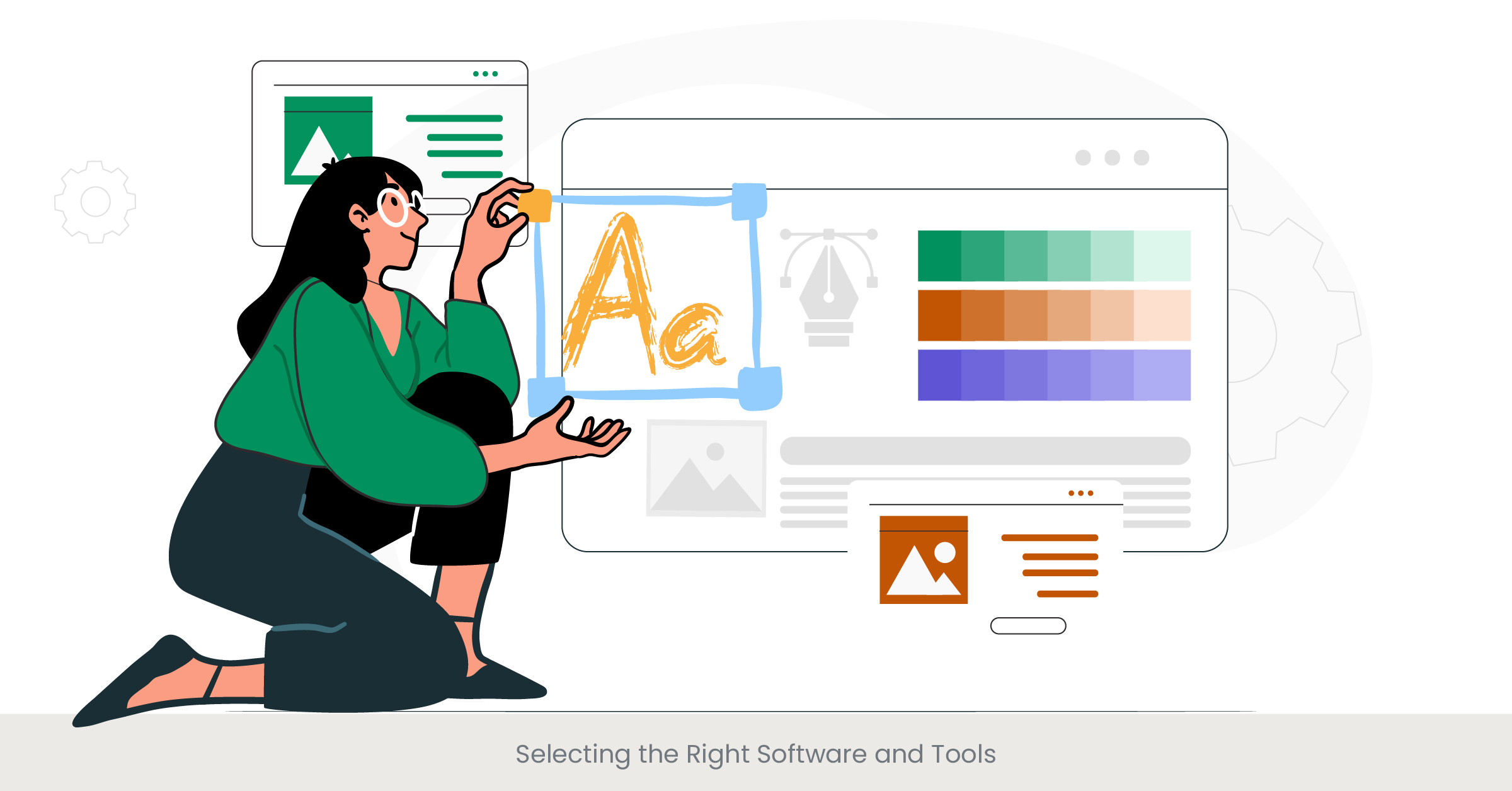
Charting the Digital Landscape for Poster Creation
In the era of digital communication, selecting the right software and tools is a pivotal decision in the lifecycle of a poster presentation. This choice can significantly influence the design process, the effectiveness of the final product, and the ease with which information is conveyed. From graphic design software to specialized scientific visualization tools, the range of available options caters to the diverse needs and skill levels of presenters. Navigating this digital landscape requires an understanding of the functionalities and features that best complement the objectives of the poster, ensuring that the chosen tools enhance rather than hinder the creative process.
The Foundation of Effective Design
The foundation of an effective poster design lies in the seamless integration of text, images, and data visualizations. Software such as Adobe Illustrator, Inkscape, and Canva offers a spectrum of design capabilities, from basic layout and typography to advanced graphic elements and illustrations. For presenters focused on data-rich subjects, tools like Tableau or R with ggplot2 provide sophisticated options for creating compelling data visualizations. The selection process should consider factors such as user-friendliness, compatibility with other platforms, and the specific requirements of the presentation format, whether it be print or digital.
Real-World Applications and Choices
In real-world scenarios, the choice of software often reflects the discipline and objectives of the poster presentation. For instance, researchers in the sciences may gravitate towards tools that offer precision in data representation, such as MATLAB or Python for generating plots. In contrast, professionals in the arts and humanities might prioritize software with strong typographic and layout capabilities, such as Adobe InDesign. Notable examples of well-designed posters, often shared in online forums and design communities, illustrate the impact of software choice on the effectiveness of visual communication.
Guidance from Experts and the Community
For those navigating the selection of software and tools, guidance from experienced designers and presenters can be invaluable. Online tutorials, user forums, and academic workshops provide platforms for sharing insights and tips on maximizing the potential of different software. Additionally, reviews and comparisons in design publications and blogs offer an overview of the latest features and capabilities, helping presenters make informed decisions. Leveraging these resources can demystify the digital tools landscape, empowering creators to produce posters that are not only visually appealing but also rich in content and easy to understand.
Showcase Your Research with Confidence
Learn More About Our Poster Presentation Services in Our Blog - 10 Essential Tips for Creating Engaging Digital Poster Presentations
Timeline Planning for Your Presentation
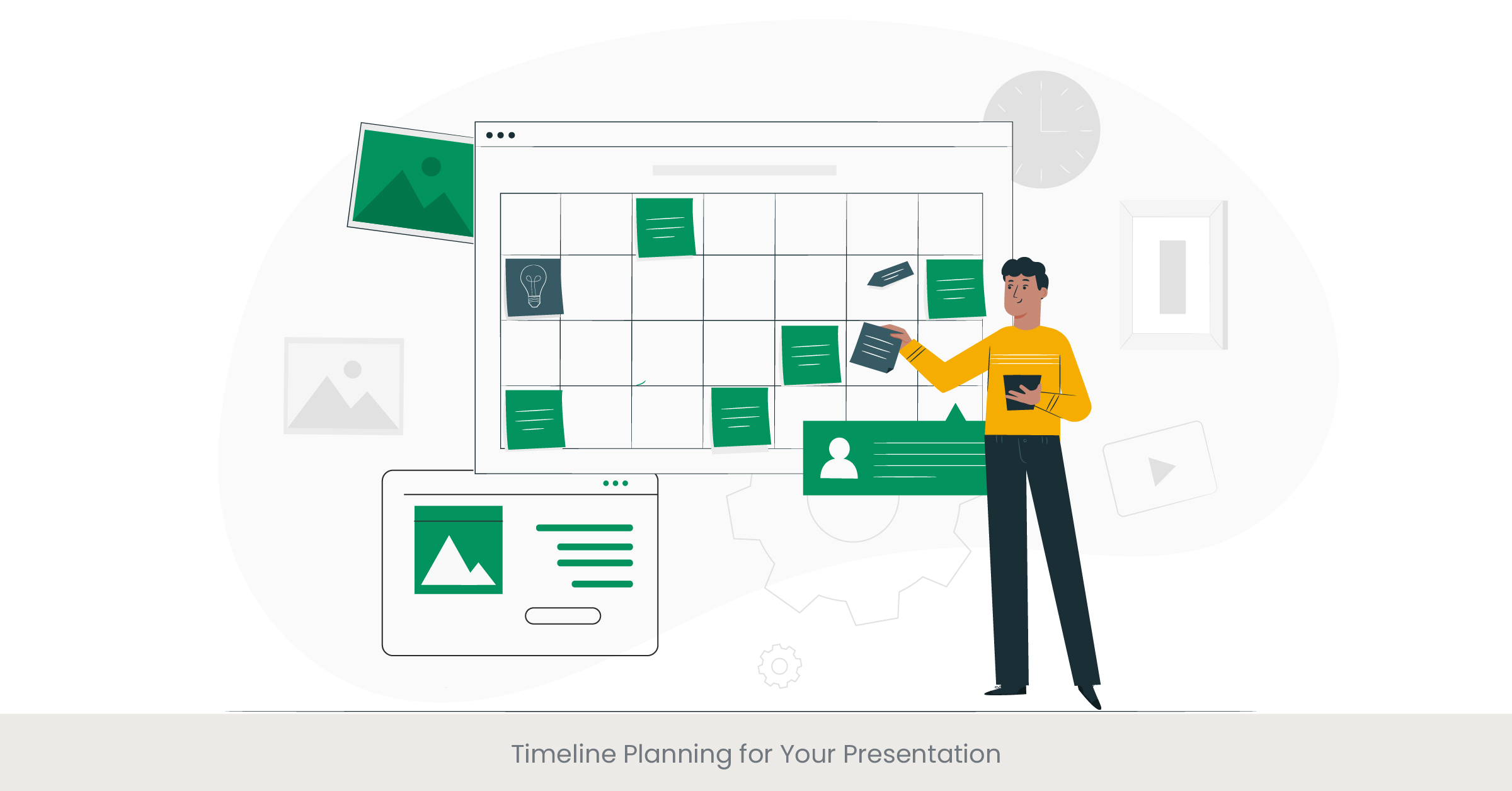
Setting the Stage for Success
Effective timeline planning is essential for ensuring the success of a poster presentation. This process involves allocating sufficient time for each phase of the poster's lifecycle, from initial research and design to printing and practice for the presentation itself. Establishing a detailed timeline helps in managing tasks efficiently, avoiding last-minute rushes, and ensuring a polished final product. By breaking down the project into manageable milestones, presenters can maintain a steady pace of progress, allowing for creativity to flourish within a structured framework.
Understanding the Key Milestones
The key milestones in the timeline of a poster presentation typically include the conceptualization of the idea, in-depth research, initial design drafts, feedback collection, final revisions, and printing or digital preparation. Additionally, presenters and event organizers should factor in time for rehearsing their explanation of the poster, as this verbal component is crucial for engaging with the audience during the presentation. Each of these stages requires careful consideration and allocation of time, taking into account the complexity of the topic, the availability of resources, and potential challenges that may arise.
Learning from Examples and Best Practices
Examining successful poster presentations provides valuable insights into effective timeline planning. For example, a presenter who begins the design process several weeks in advance can incorporate feedback from peers and mentors, ensuring a more refined and impactful poster. Academic journals and conference websites often feature timelines and planning guides, illustrating best practices for managing time efficiently. These resources highlight the importance of flexibility within the timeline, allowing for adjustments based on feedback and iterative improvements.
Expert Advice and Strategic Approaches
Experts in academic and professional presentation emphasize the importance of starting early and setting realistic deadlines. Resources like The Chronicle of Higher Education and Nature's guide to scientific posters recommend backward planning—starting from the presentation date and working backward to determine when each task should be completed. This approach ensures that all aspects of the poster, from content accuracy to design aesthetics, are given due attention. Additionally, leveraging project management tools and software can aid in tracking progress and maintaining focus on the ultimate goal: delivering a compelling and informative poster presentation.
Understanding Poster Size and Orientation
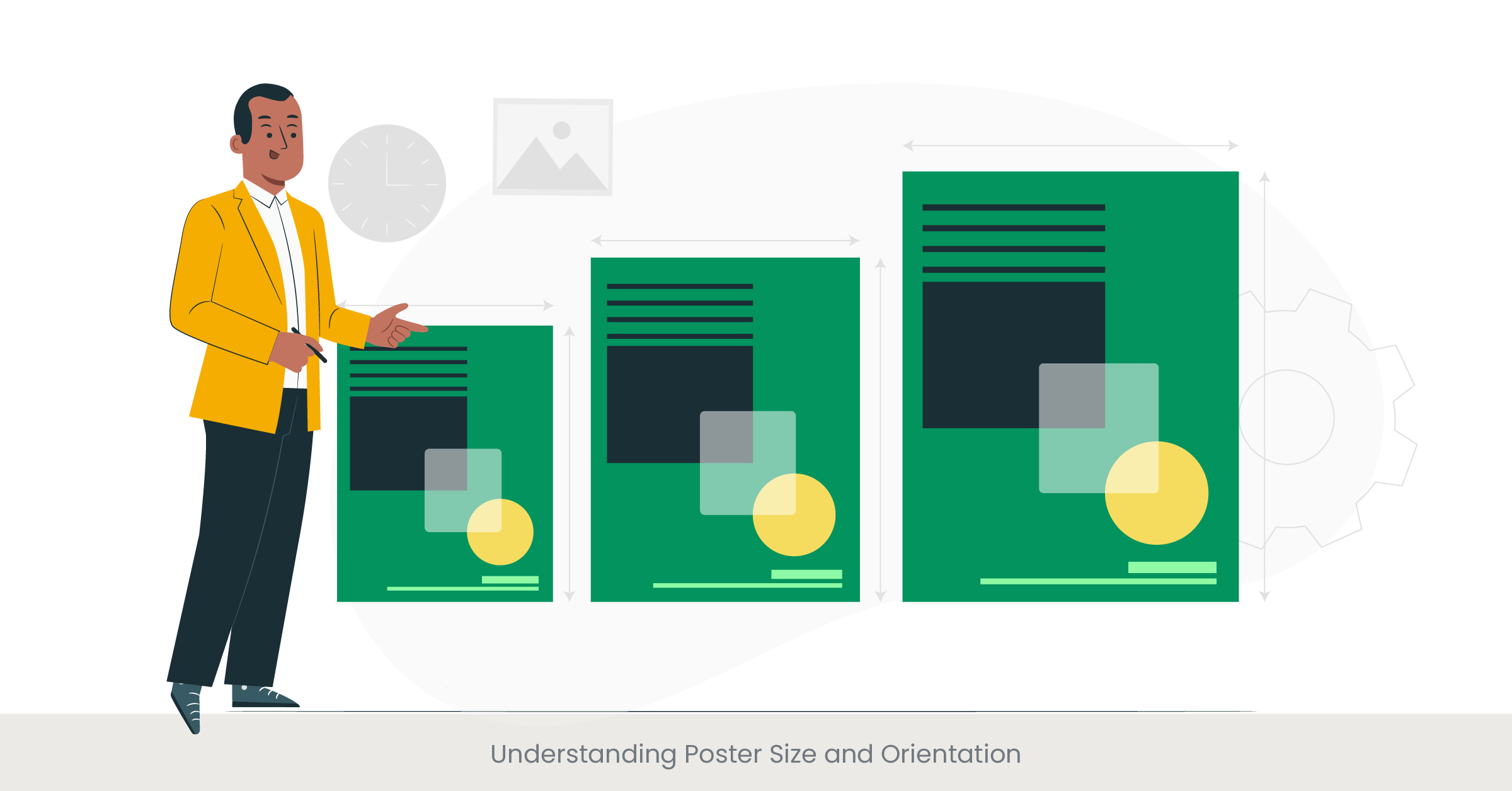
Navigating Dimensions and Design Impacts
The size and orientation of a poster presentation are critical factors that significantly influence its design, readability, and overall impact. Choosing the right dimensions requires a balance between the amount of information to be presented, the visual appeal of the poster, and the practical considerations of the venue where it will be displayed. Orientation—whether portrait or landscape—also plays a key role in how content is organized and perceived. Understanding these aspects is essential for creating a poster that effectively communicates the intended message while being visually engaging and easy to navigate.
Historical Context and Evolving Standards
Historically, the standard sizes for academic posters have evolved, influenced by printing capabilities, conference requirements, and disciplinary conventions. Common sizes range from A0 (33.1 x 46.8 inches) to A3 (11.7 x 16.5 inches), with variations based on specific event guidelines. The choice between portrait and landscape orientation has traditionally been guided by the nature of the content and the aesthetic preferences of the designer. As digital displays become more prevalent, new standards are emerging, accommodating a wider range of sizes and formats, and offering greater flexibility in poster design.
Real-World Considerations and Decisions
In practical terms, by contrast, the decision on poster size and orientation often depends on the venue's space constraints, the expected audience flow, and the method of presentation (e.g., hanging, digital screens, or stands). For instance, a larger poster in landscape orientation or standing might be more suitable for detailed data visualizations that require a wider format, while a portrait orientation could be preferred for posters that aim to communicate findings in a more linear, straightforward manner. Successful examples from various fields demonstrate how these decisions are integral to enhancing the poster's readability and audience engagement.
Expert Guidelines and Resources
Design experts and academic guidelines offer valuable advice on selecting the appropriate size and orientation for poster presentations. Recommendations typically emphasize the importance of clarity, audience engagement, and the effective use of space. Resources such as the American Psychological Association and The Royal Society of Chemistry provide specific guidelines on poster dimensions, aligning with the standard practices of academic conferences. Additionally, design software often includes templates and tools specifically tailored for poster creation, helping presenters visualize and plan their layouts in accordance with these dimensions.
If you're looking for high-quality Poster Design Templates, INK PPT offers customizable options to suit your needs and budget.
Check Out Our Guide to Professional Poster Design Templates!
Print vs. Digital Posters: A Comparative Analysis
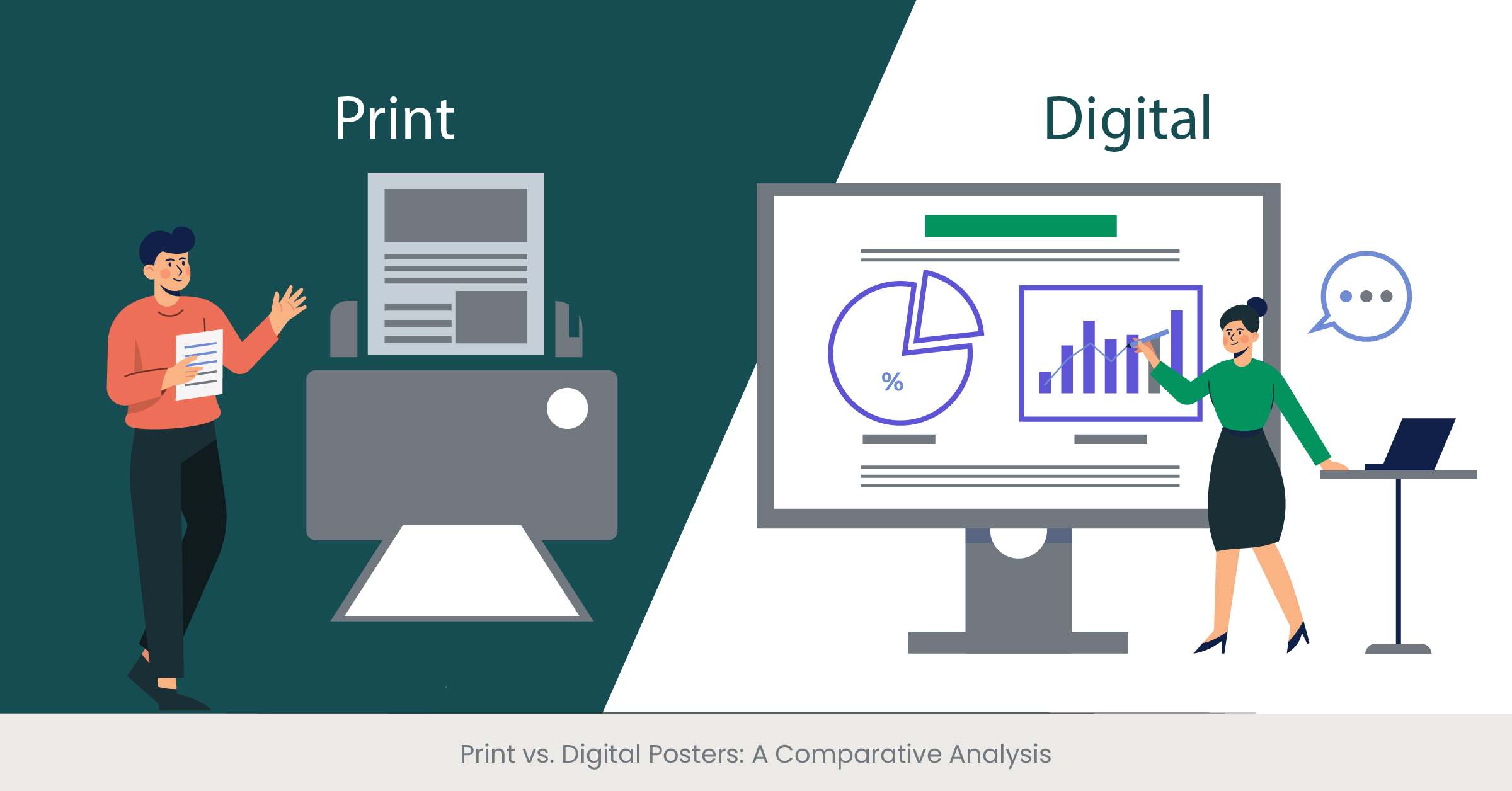
Exploring the Mediums' Unique Advantages
The choice between print and digital posters presents a crucial decision for presenters, each medium offering distinct advantages and considerations. Print posters, traditional staples of academic conferences and public spaces, excel in delivering a tactile, permanent visual experience. Their physical presence allows for easy viewing in various settings, from gallery walks to outdoor displays. Digital posters, on the other hand, leverage technology to offer dynamic, interactive elements such as animations, videos, and hyperlinks, enhancing the engagement and accessibility of the content. This comparative analysis explores how both mediums cater to different presentation goals and audience expectations.
The Evolution of Poster Presentations
The evolution from print to digital posters mirrors broader technological advancements and shifts in communication preferences. Initially, the poster's role in disseminating information was predominantly served by print formats, favored for their simplicity and wide reach. However, the digital era introduced new possibilities for interaction and information sharing, challenging the traditional poster model. Today, digital posters can be easily updated, shared online, and integrated into virtual conferences, extending their reach beyond physical boundaries. This transition highlights the adaptability of poster presentations to changing technological and societal trends.
Practical Implications and Considerations
Choosing between print and digital formats involves practical implications regarding production, distribution, and presentation. Print posters require consideration of printing costs, materials, and logistics, particularly for large-scale or high-quality prints. Digital posters, while eliminating printing costs, may necessitate access to screens or devices for viewing and interactive features that require specific software or platforms. The decision often depends on the context of the presentation, the target audience, and the desired level of interaction and engagement. Real-world examples illustrate how presenters navigate these decisions, opting for the medium that best aligns with their objectives and the capabilities of their venue.
Expert Perspectives and Future Directions
Experts in visual communication and educational technology offer insights into the strengths and limitations of both print and digital posters. Studies and articles in academic journals, such as The Journal of Digital Learning, suggest that digital posters may enhance learning outcomes and audience engagement through interactive elements. Conversely, advocates for print posters highlight the value of a tangible, distraction-free medium that encourages in-depth, focused interaction. The future of poster presentations likely involves a hybrid approach, leveraging the advantages of both mediums to meet diverse needs and preferences.
Checklist for Poster Presentation Preparation
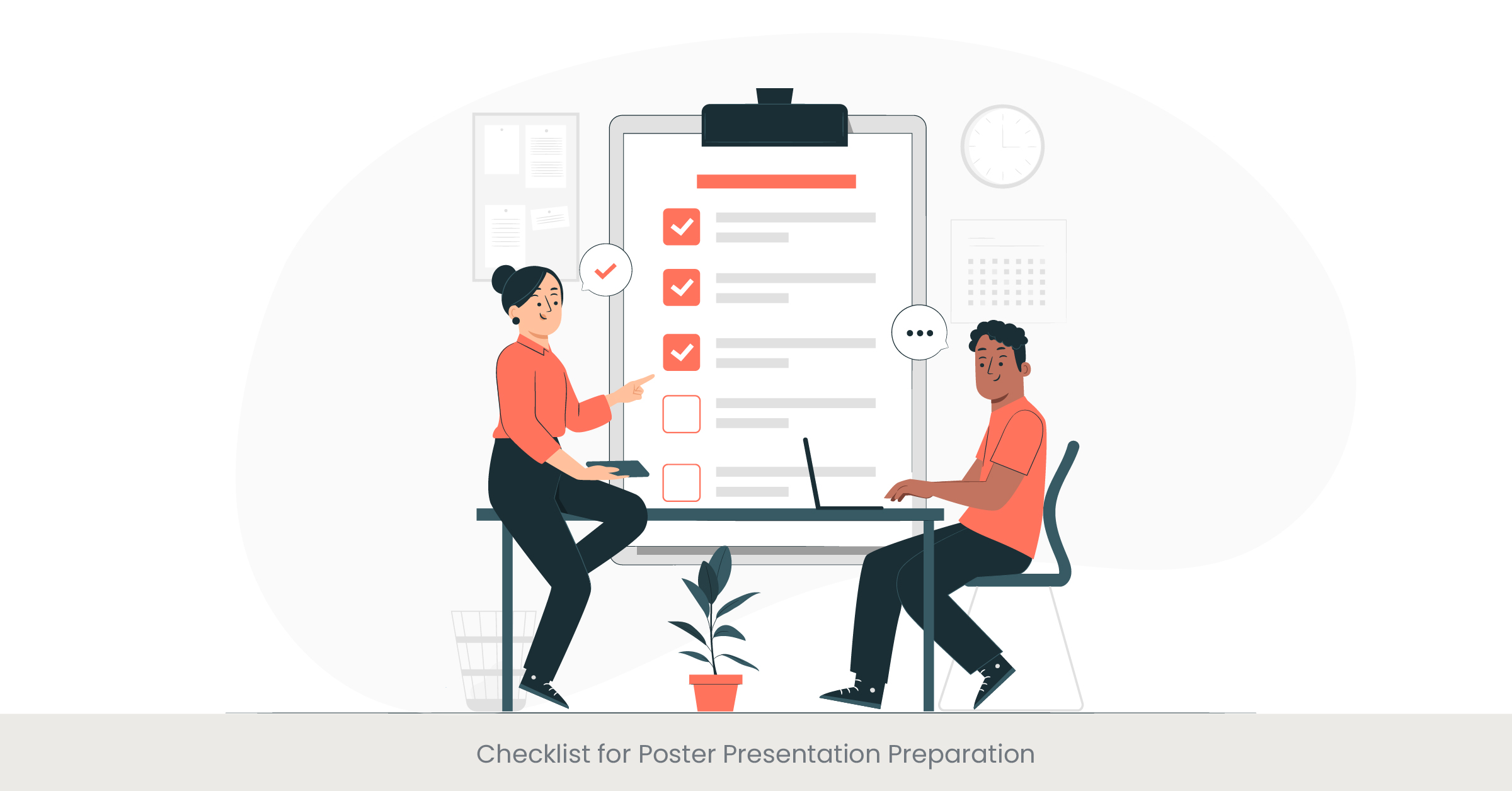
Crafting a Comprehensive Preparation Strategy
A well-organized checklist is indispensable for preparing an effective poster presentation, serving as a roadmap that guides presenters through each critical step of the process. From initial research and design to the final touches before presentation, a thorough checklist ensures no important detail is overlooked. This tool not only aids in structuring the preparation timeline but also helps in maintaining quality and coherence throughout the poster. Incorporating key tasks such as defining the poster's objectives, selecting appropriate software and tools, and practicing the presentation can significantly enhance the poster's impact.
Essential Checklist Components
The cornerstone of a poster presentation preparation checklist includes tasks such as:
Identifying the main message and target audience.
Researching and gathering relevant data and literature.
Selecting the right software and tools for design.
Drafting the layout and organizing content effectively.
Incorporating visual elements (graphs, images, charts) to complement the text.
Revising and refining the content for clarity and impact.
Ensuring adherence to the specific size and orientation requirements.
Printing or finalizing the digital version of the poster.
Preparing to create a concise and engaging oral synopsis for interaction with the audience.
Scheduling rehearsals to refine delivery and anticipate answers to questions.
Leveraging Real-World Examples
Examining real-world examples of successful poster presentations can provide valuable insights into effective preparation strategies. For instance, award-winning posters often demonstrate meticulous attention to detail, innovative use of visual aids, and clear communication of complex ideas. Academic institutions and professional conferences frequently share such examples, offering a practical glimpse into the preparation process that led to their success. These cases underline the importance of thorough planning and the impact of a well-prepared presentation.
Guidance from Experienced Presenters and Educators
Experienced presenters and educators emphasize the significance of early and thorough preparation. Resources like The Effective Poster Presentation Guide and The Academic's Handbook to Presentations offer comprehensive checklists and tips, covering every aspect of poster design and presentation. These resources advocate for a proactive approach, suggesting that presenters seek feedback during the preparation process and adapt their posters based on constructive criticism. Following a detailed checklist not only facilitates a smoother preparation experience but also increases confidence, ensuring presenters are well-equipped to engage their audience effectively.
Thanks for reading and be sure to share this guide if you enjoyed it!
Hungry to read more guides? Here are a few guides you might like:
Strategically Crafting Headlines and Titles
Mastering Data Visualization Skills Effectively
FAQs on Poster Presentations
What is a poster presentation format?
A poster presentation format involves a visual and textual summary of research or a project displayed on a large poster. This format is designed to facilitate interactive discussions between the presenter and the audience, often in an academic or professional conference setting. Key components include the title, abstract, introduction, methods, results, and conclusions, strategically arranged for readability and impact.
What are the rules of poster presentation?
The fundamental rules include clarity in design and content, succinctness in text, effective use of visuals (such as graphs, charts, and images), adherence to specified size and orientation guidelines, humor and preparedness for an engaging discussion with the audience. Additionally, respecting copyright laws and citing sources accurately is essential.
How to prepare a poster?
Preparing a poster involves identifying the main message, gathering and organizing content, designing the layout using appropriate software, incorporating visual elements to support the text, and revising content for clarity. Following a detailed checklist can ensure a comprehensive preparation process.
How do I make my poster presentation stand out?
To make a poster stand out, focus on creating an eye-catching design, concise and impactful content, high-quality visuals, and a clear, logical flow of information. Interactive elements, such as QR codes for digital posters, can also enhance engagement. Practicing your pitch to communicate and sell your message effectively during the poster session will further distinguish your presentation.
What is the definition of a poster?
A poster is a visual tool used to communicate information concisely and attractively, combining text and graphical elements. It serves various purposes, including advertising, education, and information dissemination in both public spaces and specialized settings for events like academic conferences.
What is the purpose of a poster?
The purpose of a poster is to present information in a way that is accessible and engaging to a wide audience. In academic and professional contexts, for example, posters aim to summarize research findings or project details, facilitating discussion and knowledge exchange.
What makes a good poster?
A good poster effectively communicates its message through a clear, coherent design, concise content, impactful visuals, and a viewer-friendly layout. It engages and interests the audience, encourages interaction, and conveys the essence of the research or project succinctly.
How do you write a poster?
Writing a poster involves drafting text that is clear, concise, and focused on the key messages. Use bullet points for easy reading, integrate visuals to explain complex ideas, and ensure the content is organized logically, with distinct sections for the introduction, motivation, methodology, results, and conclusions.
What do you mean by poster presentation?
A poster presentation refers to the process of summarizing research or a project on a poster and presenting it to an audience, typically at academic, scientific, or related professional events. It allows for direct interaction with viewers, offering opportunities for feedback and discussion.
How do I make a poster presentation?
Making and selling a poster presentation involves several steps: selecting the right content and visuals, designing the poster layout, printing or preparing the digital display, and finally rehearsing an engaging synopsis of your work for presentation to the audience.

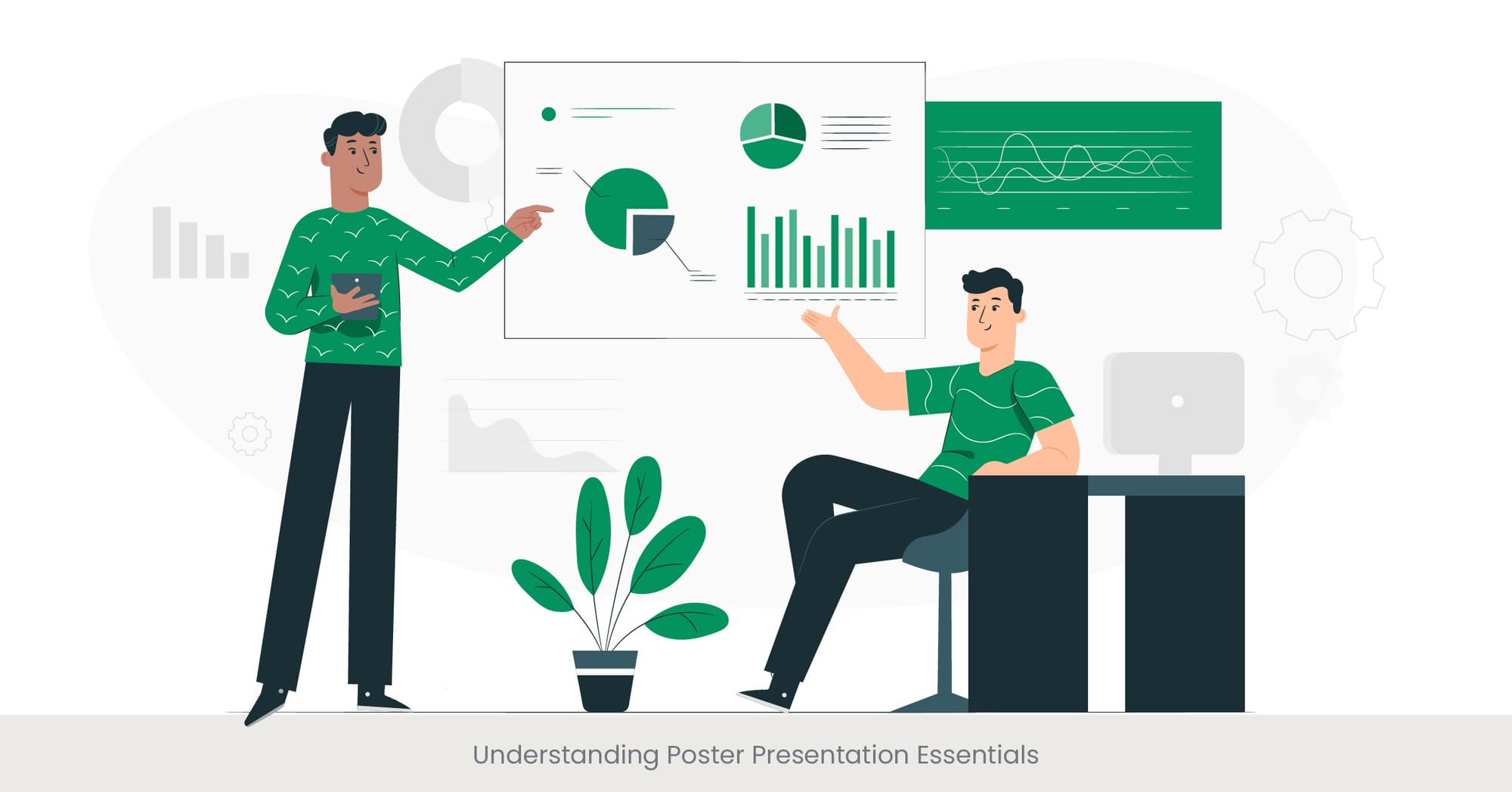

%20(1).jpg)
%20(1).jpg)
